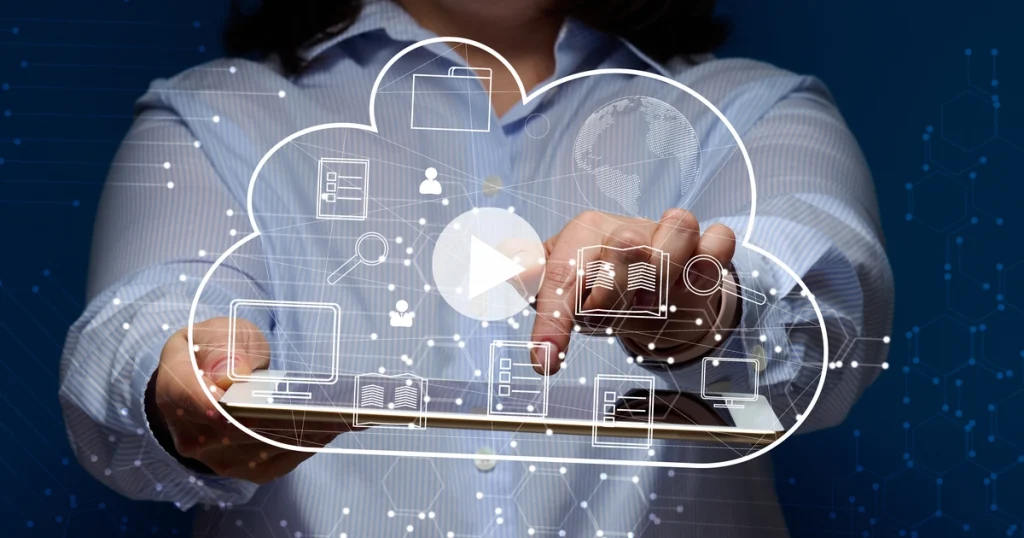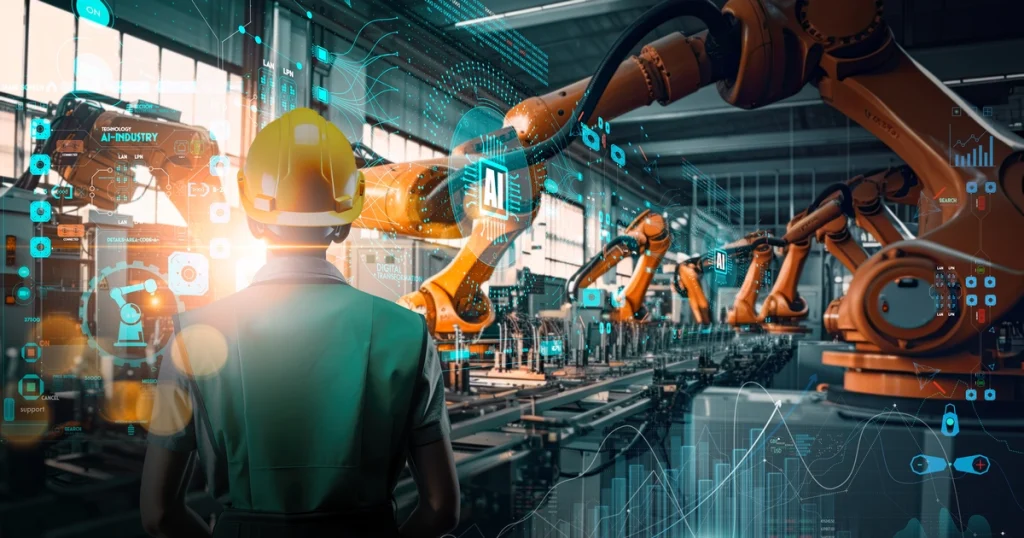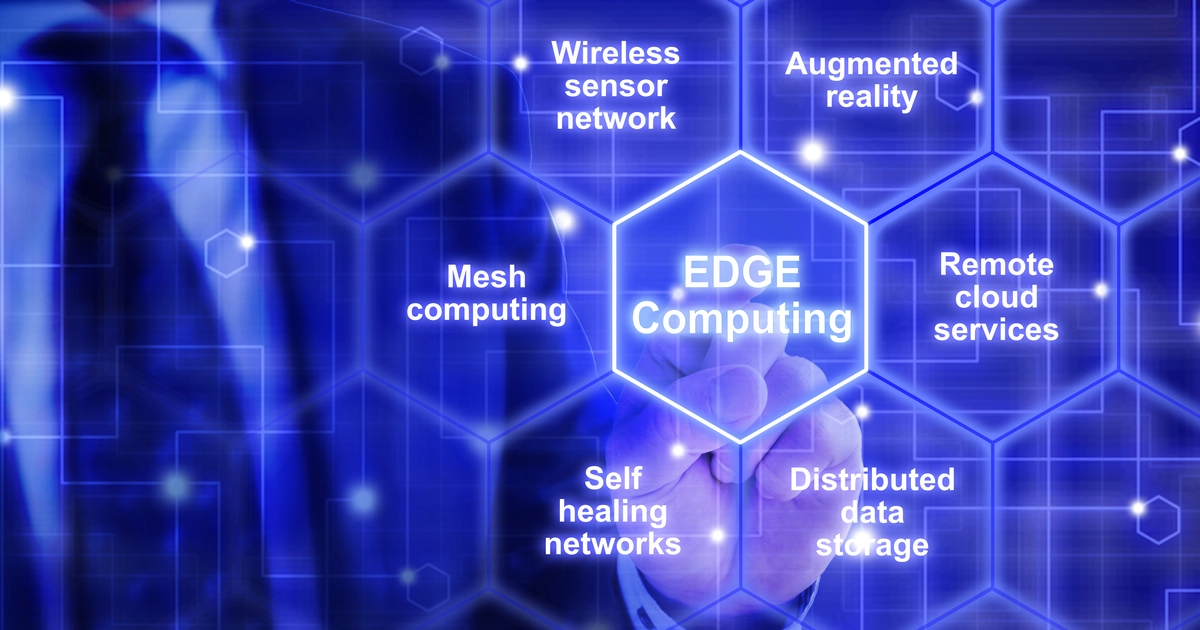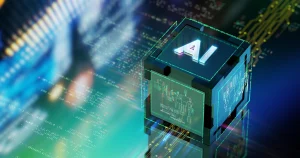Edge computing is riding a wave of technological innovation that is deeply penetrating from enterprises to cities and even into our daily lives, and with the rapid development of IoT, 5G, and AI, edge computing is becoming increasingly central to the next generation infrastructure. In this article, we will cover the basics of edge computing, the latest trends, and future prospects, revealing how this technology is changing the world.
What is Edge Computing? Why is it attracting attention now?
Edge computing is an innovative technology that moves data processing from the cloud to the edge (near data generation). This technology dramatically improves real-time performance and significantly reduces communication costs and latency. The main reasons why edge computing is gaining attention are
- Explosive increase in data volume: With the proliferation of IoT devices, the amount of data being generated is rapidly increasing. Processing all of this data in the cloud is inefficient in terms of bandwidth and cost.
- Demand for real-time processing: Increasingly, fields such as self-driving cars and smart factories require instantaneous reactions. Edge computing can meet these demands.
- Privacy and security concernsData is processed locally, reducing the risk of sending sensitive information to the cloud.
- Network bandwidth constraintsEdge Computing: It is not always possible to ensure stable, high-speed communication, especially for devices in remote locations or on the move. Edge computing solves this problem.
- Improved energy efficiencyData: Processing data locally instead of sending it to the cloud reduces overall energy consumption.
These factors predict that edge computing will be a key component of the digital infrastructure of the future.

Cloud vs. Edge: What's Changing?
The main difference between cloud computing and edge computing is where and how data is processed. This difference has important implications in a variety of applications.
Cloud Computing:
- Centralized data processing
- Suitable for large-scale data analysis
- High scalability
- Delays may occur.
- Permanent connection required
Edge Computing:
- Distributed data processing
- Suitable for real-time processing
- Can operate locally and autonomously
- Low latency
- Offline operation is also possible
These different characteristics make edge computing particularly powerful in the following areas
- self-driving carReal-time processing at the edge is indispensable in situations where millisecond-by-millisecond decisions are required.
- smart factoryEdge Computing: Edge computing plays an active role in immediate control of production lines and anomaly detection.
- AR/VRLow latency data processing is required to provide an immersive experience.
- smart cityEdge computing will be used for real-time control of entire cities, such as traffic management and crime prevention systems.
- health care: Data from wearable devices can be analyzed in real time and used to respond immediately to emergencies.
Thus, edge computing complements cloud computing to create a more flexible and efficient data processing environment. Appropriate combination of the two is expected to accelerate innovation in various industrial sectors.

The Evolution of Edge Computing: Ahead of the Technology of the Future
Edge computing continues to evolve rapidly and more innovation is expected in the coming years. This evolution will be accelerated by linkages with AI and IoT, enabling unprecedented levels of autonomy and optimization.
Key directions in the evolution of edge computing:
- Edge AI sophistication:
- Evolution of on-device machine learning
- Real-time image recognition and natural language processing
- Enabling complex decision-making processes at the edge
- Integration with 5G:
- Realization of ultra-low latency communication
- Mobile Edge Computing (MEC)
- Flexible resource allocation through network slicing
- Improved energy efficiency:
- Development of low-power devices
- Energy harvesting technology applications
- Realization of Green Computing
- Enhanced security:
- Blockchain Technology Integration
- Faster encryption processing at the edge
- Real-time threat detection using AI
- Spreading Federated Learning:
- Distributed learning while protecting privacy
- Knowledge sharing between edge devices
- Continuous improvement of the global AI model
These advancements will enable edge computing to anticipate future technologies such as
- Fully autonomous transportation system
- Personalized medical diagnosis and treatment
- Efficient energy management through smart grids
- Disaster Prediction and Immediate Response System
- Surrealistic AR/VR experience
The evolution of edge computing is more than just a technological advancement; it has the potential to fundamentally change our way of life and social structure. Continuous research and development and the development of appropriate regulatory frameworks are essential to unlock the full potential of this technology.

Advantages of Edge Computing: Immediate Benefits and Cost Reductions
Edge computing is an innovative technology that simultaneously delivers immediate benefits and cost savings. Let's take a closer look at its key benefits.
1. enhanced real-time processing
The greatest advantage of edge computing is its ability to process data instantly with minimal latency. This characteristic is especially important in areas such as
- self-driving car: Instantaneous recognition of the surrounding environment enables immediate decisions to avoid accidents. For example, it can react in milliseconds to a pedestrian ejection or sudden lane change.
- Industrial Robot: Enables high-speed and precise motion control on the production line, leading to improved production efficiency and quality.
- AR/VR: Enables real-time reactions to user movements, providing an immersive experience.
- financial transactionsHFT : This is a powerful tool in situations where millisecond delays can make a big difference, such as in high-frequency trading (HFT).
Enhanced real-time processing could open up previously unattainable application areas and create new business opportunities.
2. improved security
Processing data at the edge also brings significant security benefits:
- data localization: The risk of data leakage is greatly reduced because sensitive data does not need to be sent to the cloud.
- Distributed Architecture: Compared to a centralized system, the impact of cyber attacks can be localized.
- Real-time threat detection: AI processing at the edge enables real-time detection of abnormal network activity and unauthorized access and immediate response.
- Compliance: Facilitates compliance with regulations regarding cross-border movement of data (e.g., GDPR).
Especially in the medical and financial sectors, where data confidentiality is extremely important, edge computing can significantly increase the level of security.
Significant reduction in communication costs
Edge computing can also make a significant contribution to reducing communication costs:
- Reduction of data transfer volume: Bandwidth usage can be optimized by sending only the necessary data to the cloud. Some reports indicate that this can reduce communication costs by up to 601 TP3T.
- Network load balancing: Data processing at the edge distributes the network load and improves the efficiency of the overall communications infrastructure.
- Realization of offline processing: Data processing can be done locally, even in environments where the Internet connection is unstable. This is especially important for devices in remote locations or on the move.
- Improved energy efficiency: Reduced data transfer can also extend the battery life of the device.
Reducing communication costs offers significant economic benefits, especially for companies deploying a large number of IoT devices and for organizations providing services in remote areas.

Case Study: Tangible Transformations Driven by Edge Computing
By looking at actual applications of edge computing, one can get a concrete picture of the transformation that this technology will bring. Below are some typical examples in detail.
Automated vehicles: Real-time safety decisions
Edge computing is an integral part of automated driving technology:
- Immediate processing of sensor data: The system instantly recognizes the surrounding environment by processing a vast amount of data from in-vehicle cameras and LiDAR in real time.
- AI-powered decision making: Edge AI allows you to instantly make the best decisions in complex traffic situations.
- Improved efficiency of V2X communication: Processing vehicle-to-vehicle and vehicle-to-infrastructure communications at the edge improves the efficiency and safety of the entire transportation system.
- Guaranteed offline operation: Safe autonomous driving can be maintained even in environments where GPS and cloud connectivity are unstable.
For example, Tesla's self-driving system uses an onboard AI chip to perform advanced image recognition and decision making at the edge. This enables millisecond-by-millisecond reactions and greatly improves the accuracy of accident avoidance.
Smart Factories in the Manufacturing Industry
The manufacturing industry is rapidly moving toward smart factories using edge computing:
- Real-time equipment monitoring: Data obtained from sensors is immediately analyzed at the edge to detect anomalies, minimizing equipment downtime.
- Realization of predictive maintenance: Operating machine learning models at the edge enables early detection of signs of failure and planned maintenance.
- Production line optimization: Maximize production efficiency by dynamically adjusting the production process based on real-time data.
- Automated quality control: Combining a high-speed camera and edge AI, product defects are detected in real time, preventing defective products.
For example, Siemens has successfully implemented edge computing in its own factories to improve production efficiency by 30% and significantly reduce quality defects.
These examples show that edge computing is not just a theoretical technology, but is already bringing about significant change in the real world. In the future, edge computing will be adopted in more and more industrial fields, and it is expected to have a significant impact on the way we live and work.

Edge AI: Emerging Trends for Future Technologies
Edge AI is an innovative approach that combines edge computing and AI technologies. This new technological paradigm dramatically increases data processing power, making real-time predictions and decision-making a reality that was previously impossible.
Edge AI Features and Benefits
- local processing: AI models directly on edge devices enable intelligent processing without relying on the cloud.
- low delay: Since there is no need to send data to the cloud, ultra-low latency processing on the millisecond level is achieved.
- Privacy Protection: Processing sensitive data locally enhances data privacy and security.
- conservation of electric power: The use of efficient AI chips enables advanced processing while reducing energy consumption.
- off-line operation: Advanced AI-based functions can be provided even in environments without an Internet connection.
Edge AI Application Areas
Edge AI offers innovative solutions in a variety of areas:
- smart home: AI functions such as voice and facial recognition can be performed at high speed while protecting privacy.
- wearable device: Health monitoring and activity recognition can be performed in real time with low battery consumption.
- Industrial Robot: Enables autonomous behavior and decision making in complex environments.
- Security Cameras: Real-time facial recognition and anomaly detection greatly improve the efficiency of security systems.
- self-driving car: Enables awareness of the surrounding environment and immediate decision making without relying on the cloud.

Case Study: Anomaly Detection with Edge AI
Let's take a closer look at some examples of edge AI applications in the manufacturing industry.
Backgrounds:.
In large-scale production lines, equipment failure or abnormality can have a significant impact on productivity. Conventional periodic inspections make it difficult to prevent sudden breakdowns.
solution (esp. to a problem):
A predictive maintenance system utilizing edge AI has been introduced.
- Sensor installation: Attach vibration, temperature, acoustic, and other sensors to each device.
- Edge device placement: Install an edge device with AI processing power near each device.
- AI Model Development: Develop AI models that have learned the normal operation patterns of devices and mount them on edge devices.
- Real-time monitoring: Sensor data is constantly analyzed by edge devices to immediately detect abnormal patterns.
- Preventive Action: Automatically alerts you when signs of abnormality are detected and shuts down the equipment if necessary.
result:
The implementation of this system has yielded the following results
- 80% reduction in unexpected downtime due to equipment failure
- Maintenance costs reduced by 401 TP3T
- Improved product quality consistency and reduced rejection rate by 151 TP3T
- Energy consumption reduced by 20% (through optimal operation of equipment)
This case study demonstrates that edge AI is more than just a technological innovation; it creates tangible business value. It is expected that similar innovations will occur in many more industry sectors in the future as edge AI develops.

Synergy of Edge and Cloud: The Future of Optimal Data Processing
Edge computing and cloud computing are not opposing concepts, but complementary technologies. By maximizing the synergy between the two, a more efficient and flexible data processing environment can be realized.
Edge and Cloud Role Shared
- Role of the Edge:
- Real-time processing and immediate decision-making
- Local data preprocessing and compression
- Privacy-conscious data processing
- Autonomous operation in environments with unstable network connections
- Role of the Cloud:
- Long-term storage and analysis of large data sets
- Training of complex and computationally intensive AI models
- Data integration and insight extraction from a global perspective
- Manage and monitor entire edge devices
Advantages of Hybrid Architecture
- Improved scalability: The combination of distributed processing at the edge and centralized processing in the cloud increases the scalability of the overall system.
- cost optimization: Communication and computation costs can be optimized by appropriately distributing data processing between the edge and the cloud.
- Flexible operations: Dynamically adjust edge and cloud roles according to network conditions and processing requirements.
- Enhanced Security: Sensitive data is processed at the edge and only anonymized data is sent to the cloud, improving overall security.
- Accelerating Innovation: Rapid experimentation at the edge combined with large-scale analysis in the cloud accelerates the development of new services and products.
Future Application Scenarios
- smart city:
- Edge: Real-time control of traffic signals, priority passage for emergency vehicles
- Cloud: Analyze citywide traffic patterns, optimize long-term urban planning
- Personalized Medicine:
- Edge: Real-time health monitoring with wearable devices
- The Cloud: Analyzing Large-Scale Medical Data to Develop New Treatments
- Autonomous drone delivery:
- Edge: autonomous drone flight control, obstacle avoidance
- Cloud: delivery route optimization, flight planning taking weather data into account
- Next Generation Manufacturing:
- Edge: Real-time control of production lines, quality inspection
- Cloud: Optimize the entire supply chain, demand forecasting
These application scenarios are just some of the possibilities offered by the synergy between the edge and the cloud. More innovative applications are expected to emerge as the technology evolves. The optimal combination of edge and cloud depends on the characteristics and objectives of each organization. By striking the right balance between the two, we will be able to accelerate digital transformation and realize new value creation.

Summary: The Future of Edge Computing
NMREdge computing will be a key next-generation technology in our lives and businesses. In addition to tangible benefits such as real-time processing, enhanced security, and cost reduction, it is expected to play an increasingly important role in conjunction with edge AI and IoT. Keep an eye on how this technology will evolve and transform our society in the coming years.








